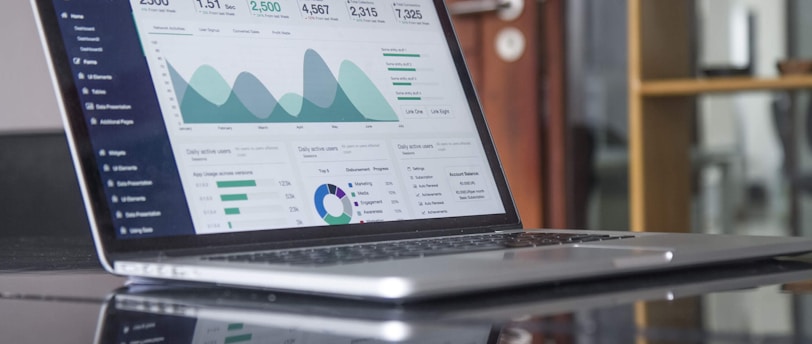Maximizing Energy Efficiency
How IoT and Energy Management Can Cut Costs and Emissions
11/29/20243 min read


In the fast-paced world of energy management, companies are at a critical crossroads. They must find ways to cut costs while also working to reduce their environmental impact. Luckily, the Internet of Things (IoT) and advanced energy management systems offer transformative solutions. When organizations integrate IoT devices with smart energy strategies, they can achieve significant cost reductions and lower emissions simultaneously.
Understanding IoT and Energy Management
The Internet of Things refers to a network of interconnected devices that communicate and share data. This can include everything from smart thermostats to advanced machinery. These devices monitor and report various operational metrics in real-time, allowing businesses to make informed decisions.
Energy management involves systematically monitoring and controlling energy usage in buildings or across entire organizations. When IoT technology is applied, energy management becomes far more precise, leading to enhanced resource allocation and informed decision-making.
How IoT Drives Energy Efficiency
IoT devices play a vital role in capturing real-time data about energy consumption. Companies can gain actionable insights that were once difficult to access. For example, smart meters can track electricity usage by the hour, enabling businesses to adjust operations based on peak demand times.
Such data-driven insights allow companies to identify high-energy-consuming devices. By focusing on these areas, they can implement targeted strategies to curb consumption. For instance, a retail chain that utilizes IoT-enabled lighting systems can achieve up to 30% reductions in energy usage simply by adjusting settings based on customer traffic.
Moreover, IoT-enabled predictive maintenance can prevent equipment failures before they happen. By continuously analyzing sensor data, businesses can ensure that their machinery operates at top efficiency, thereby minimizing downtime and energy waste.
Cost Savings Through Smart Energy Management
Reduced Energy Bills: Utilizing IoT-driven energy management can lead to drastic reductions in energy bills. Companies have reported savings of up to 20% after optimizing their energy usage with data analytics.
Maintenance Cost Reductions: By employing predictive maintenance, organizations can cut maintenance costs by as much as 12% by scheduling repairs only when truly necessary.
Operational Savings: By harnessing real-time monitoring, organizations can streamline their operations and decrease waste, leading to both direct and indirect cost savings. For example, a manufacturing plant that adopts IoT solutions can find up to 15% savings in operational expenses.
Incentives and Rebates: Many local governments provide incentives for businesses that implement energy-efficient practices. By utilizing IoT, companies can often qualify for rebates, offering another layer of cost savings.
Emission Reductions Through Energy Efficiency
The benefits of IoT extend beyond financial savings; they play a crucial role in lowering greenhouse gas emissions.
Lower Carbon Footprint: Optimizing energy consumption means relying less on fossil fuels. Companies can achieve carbon footprint reductions of 25% or more by adopting IoT solutions for energy usage.
Integration with Renewable Energy: IoT devices can facilitate the use of renewable energy sources. For instance, businesses can integrate solar power systems more effectively, leading to a maximum utilization of clean energy.
Enhanced Energy Resilience: Organizations that leverage IoT technology can adapt their energy sourcing and usage. This flexibility is essential in a world increasingly affected by natural disasters and changes in climate patterns.
The Role of Data Analytics in Energy Management
Data analytics is key to transforming raw IoT data into valuable insights. Energy management systems equipped with advanced analytics help organizations visualize energy use and recognize patterns.
Customized Energy Strategies: Tailoring energy strategies to needs can enhance performance. For example, a hotel can adjust heating and cooling systems based on guest occupancy, resulting in significant energy savings.
Continuous Improvement: Regular monitoring of energy data fosters a culture focused on efficiency. Organizations can set new reduction targets by reviewing performance and progress frequently.
Benchmarking: Companies can compare performance against industry standards or internal metrics. This approach instills a competitive mindset that drives improvements in energy management.
Challenges in Implementing IoT and Energy Management
Despite the advantages, challenges persist.
Initial Investment Costs: The upfront costs of IoT devices and energy management systems can be daunting. However, evaluating these costs in light of potential long-term savings is critical.
Integration Complexities: Many businesses operate legacy systems, making it tough to integrate new IoT technologies. Engaging experienced professionals to ensure smooth integration is often necessary.
Data Security: With IoT devices comes the risk of data breaches. Organizations need to invest in strong security measures to protect sensitive information.
A Sustainable Future Through Smart Technology
As climate change and rising costs challenge businesses, IoT and energy management solutions provide a viable path forward. By using real-time data, companies can make informed decisions that improve profitability while contributing positively to the environment.
Investing in IoT technologies and energy management strategies is not just about staying current; it is crucial for companies committed to sustainability and efficiency. With an intentional approach, organizations can lead the way toward a future that values both energy efficiency and environmental responsibility.
